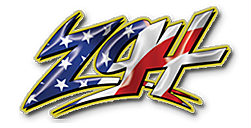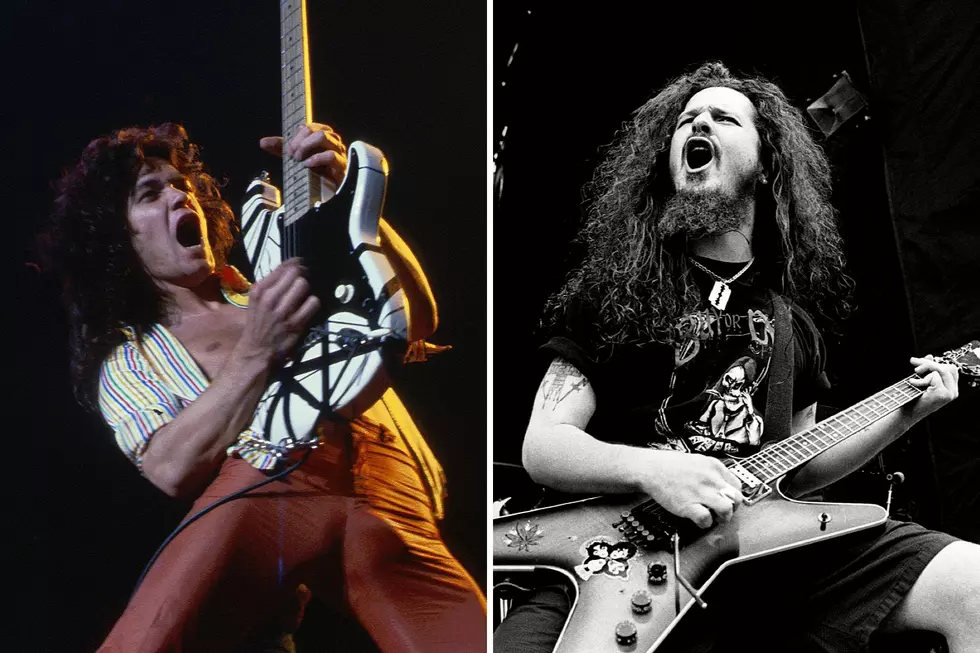
Jimi Hendrix’s ‘Electric Ladyland’ Turns 50 – A Look Back
"I was sort of set not to dig this LP," Tony Glover wrote in his review of Jimi Hendrix's Electric Ladyland for Rolling Stone in 1968. "But I had to," he added. "Hendrix is a good musician."
It's interesting, and even amusing, to go back to a time when Hendrix wasn't a rock deity. In 1968 when he released his third album, he was still the hot new artist on the scene. His debut album, Are You Experienced?, was released less than two years earlier. Back then, he wasn't always mentioned in the lists of the greatest artists, guitarists or albums of all time. In the '60s, no one was really chronicling rock music in that way; no one really knew that it would have the staying power that it has enjoyed over the past five decades.
Today, Jimi Hendrix is such a cornerstone of rock music that it's impossible to overlook his accomplishments and his incredible discography. Classic rock radio still plays "Hey Joe" and "Purple Haze" and "Foxy Lady" and "All Along the Watchtower" frequently. He is a huge part of the foundation of rock and metal, but as much as he's been celebrated over the decades, in 2018, there's the danger of seeing him as a character in a music history book, as opposed to a vital artist who holds up to anyone who has come in his wake.
That would be a big mistake, particularly if you're a music fan. Taken out of the context of history (admittedly, that's hard to do with an icon of his magnitude), Jimi Hendrix's records are still mind-blowing listening experiences. That's especially true of Electric Ladyland. Like the Beatles, by '68, Hendrix was tired of the image that made him a superstar. Also like the Fab Four, his sense of experimentation led him on to greater glory and did so without causing him to lose any of his commercial appeal. Electric Ladyland, a sprawling double album, was his only LP to top the Billboard charts, and his cover of Bob Dylan's "All Along the Watchtower" was his only U.S. Top 40 hit. (The album is currently getting a 50th-anniversary deluxe edition; pre-order the different incarnations of the reissue here.)
Hendrix has influenced nearly every guitarist and guitar-based band who has followed. Tony Iommi, Jimmy Page, Eddie Van Halen, Carlos Santana, Zakk Wylde, Flea, Jack White, Kirk Hammett, Slash, Chrissie Hynde of the Pretenders, The Edge, Dave Mustaine, Duane Allman, Vernon Reid, John Mayer, Sting, Robert Smith of the Cure and Ace Frehley: that's just a small list of some of the players who would be radically different players without Hendrix's inspiration. Our list of the 66 Best Hard Rock and Metal Guitarists ever (see the gallery below) is essentially a list of Hendrix disciples. At the very least, everyone on the list is impacted by someone who was influenced by Jimi Hendrix.
(Dave Mustaine, Dug Pinnick of King's X, Joe Satriani and members of Los Lobos are all among the artists on this year's just-announced Experience Hendrix tribute tour.)
Another six-stringer who is heavily influenced by Hendrix is Tom Morello. Morello said that he wants his recently-released solo album, The Atlas Underground, to be the "the Hendrix of now"; in other words, a guitar-based album that infiltrates the mainstream and speaks to today's youth culture. (Read our Atlas Underground review here) With that in mind, he worked with a number of collaborators to try different musical avenues. Hip-hop legends Big Boi, Killer Mike, RZA and GZA are on the album; it's not a big stretch to imagine that Hendrix would have appreciated how hip-hop, turntables and sampling manipulated sound and songwriting, in new ways. He also worked with EDM producers Steve Aoki and Bassnectar, and likewise, surely an experimental artist like Hendrix would have appreciated those artists as well. And yes, other guitar-based artists -- Gary Clark Jr. and Mumford & Sons' Marcus Mumford -- show up too.
Loudwire spoke to Morello about Electric Ladyland. "It’s another link in the chain of a genius artist continuing to explore the endless imagination that he had, and his mastery of an instrument. He was in a lane entirely by himself that was miles above and apart from other electric guitar players of the era," says Morello. "One thing about Hendrix was that he really delved into the funk too. His right-hand grooves were devastating. 'Voodoo Child (Slight Return)' is one of the all-time heavy jams and it’s like a union of man and guitar and mission that is the pinnacle of what you can do on the instrument. There were no boundaries to the ideas that he could express on the instrument, and it was really that record, more than any other, that exposes that."
It's true: Electric Ladyland goes from R&B ["Have You Ever Been (To Electric Ladyland)"] to psychedelic ["Burning of the Midnight Lamp"] to proto-metal ["Voodoo Child (Slight Return)"] to electric blues ["Voodoo Chile," featuring Traffic's Steve Winwood and the Jefferson Airplane's Jack Casady, the spiritual grandfather of Bonnaroo's all-star jams] to the free-form bonkers avant-garde jam "1983... (A Merman I Should Turn To Be)." It's not just that Hendrix seemed to be able to take on any genre, it's that he was a master at them all.
Towards the end of the Rolling Stone review, Glover writes, "And if you wanna flow, dig this on earphones, and watch the guitar swoop back and forth through your head." That line sounds kind of cute in 2018; these days, almost everyone listens to music on some sort of portable streaming device with earphones (or earbuds). Back then, headphones were only worn when plugged into one's hi-fi home stereo system, but there might be something to Glover's advice: in an age dominated by multi-format playlists, Electric Ladyland may be the ultimate playlist. It just so happens to feature only one artist, whose impact is still being felt, nearly five decades after his passing. So, by all means, plug in your headphones, turn on Electric Ladyland, and "flow."
Top 66 Hard Rock + Metal Guitarists of All Time
10 Unforgettable Jimi Hendrix Moments



